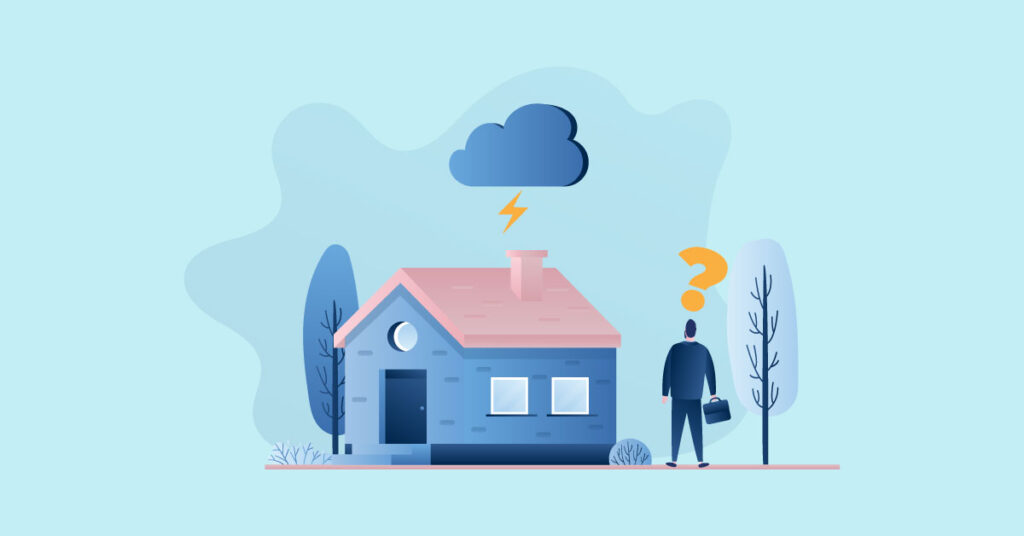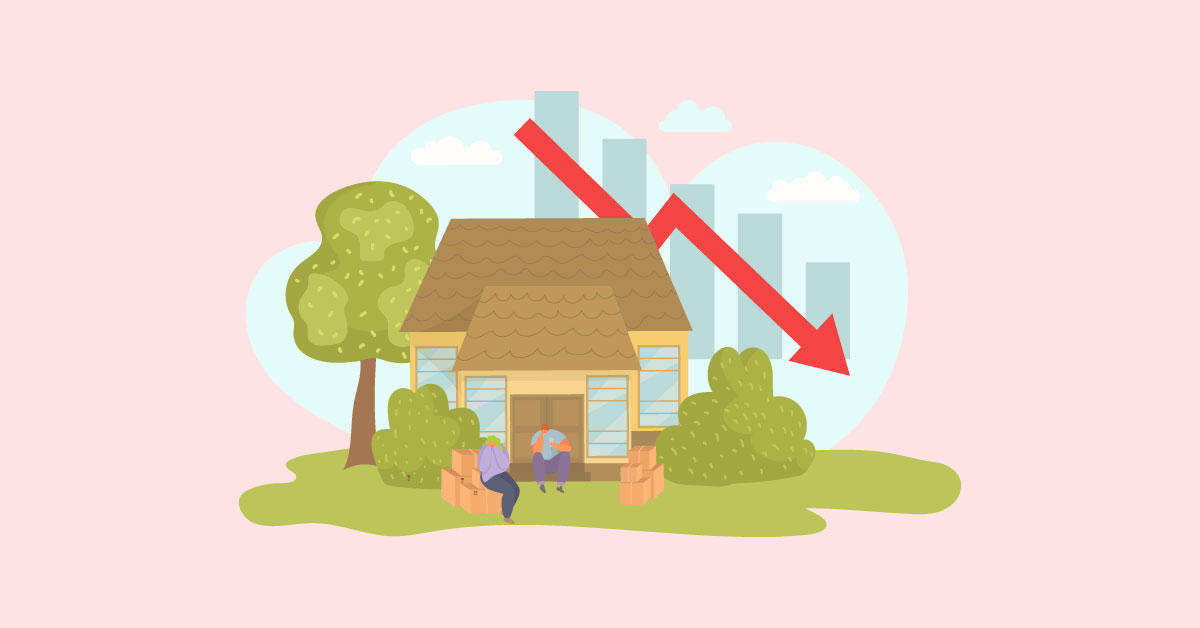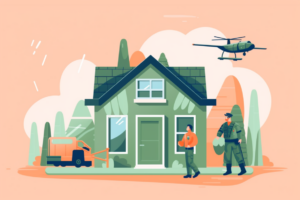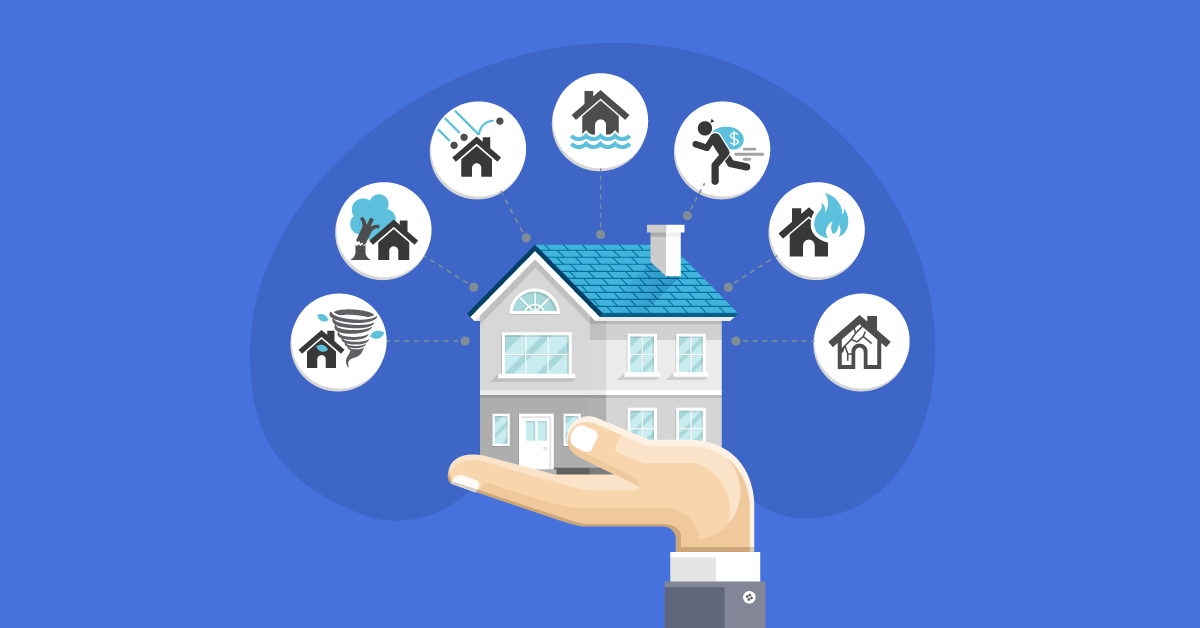Buying a homeowners’ insurance policy helps protect a home from fire and theft. An insurance policy covers personal belongings and liability for injuries on a property. As a homeowner, you should put in the effort and do research before deciding on a specific policy. You don’t want your home underinsured or covered by cheap insurance.
While there are different homeowners’ insurance policies to choose from, each has a set of exclusions and limitations. Understanding what they are getting into before purchasing the coverage is crucial. Homeowners should avoid these 12 homeowners insurance mistakes when buying a policy.
1. Forgetting to Buy Flood Insurance
Those living in a flood zone area must buy a flood insurance policy. Most home insurance policies do not cover flood damages from hurricanes, torrential rains, and tropical storms. They cover water damages from burst pipes or leaking plumbing.
Adding flood policy coverage helps protect against such incidences. An average flood insurance policy costs about $771 per year. Homeowners should buy a flood policy through the National Flood Insurance Program for maximum protection.
2. Only Focusing on Price
Many individuals only consider price when buying a home insurance policy. They forget to focus on other factors, such as basic coverage and additional damages like medical payments, living expenses, personal liabilities, and living expenses.
When you only consider the price point you could end up being underinsured or not fully covered; which in turn you might suffer from the burden of paying more deductibles with low premiums. Adequate coverage protects a homeowner from unforeseen circumstances and saves them extra expenses during an emergency.
3. Forgetting to Get a Sewer Backup Coverage
A standard home insurance policy covers some water damage from rain or plumbing, such as broken pipes or faucets. It doesn’t cover damages caused by clogged pipes, broken lines, or tree roots.
Getting sewer backup coverage through an endorsement protects homes from flooding disasters. The policy covers water backups and the cost of removing water from the home. Some policies pay for furnishing, structural damage, and furniture.
4. Ignoring Insurance Terms and Conditions

When an individual buys insurance, the insurer asks them to sign a declaration form. Every homeowner should read the declaration form to understand what the insurance covers before signing. Check what the inclusions are. Does the insurer cover flood and sewerage?
Often homeowners pay attention to inclusion, forgetting the exclusions. Research the company to see if it offers other exclusions such as fire, explosion, falling objects, sudden wear and tear, and vandalism. Buying a home insurance policy without reading the exclusion list costs money during a settlement claim.
If something is not adding up, ask for clarification. This clarity helps you avoid unpleasant surprises during settlement. Reading through the policy helps rule out cheaper insurances that seem appealing. It enables you to pick the right one, saving money and stress in the long run.
5. Underestimating the Value of Personal Belongings
When applying for home insurance, homeowners make the mistake of underestimating their personal belongings for fear of rejection or high premiums. This exposes them to the risk of being underinsured. The insurance provider does not pay for items not valued.
An individual must replace items not covered by the insurer out of pocket, which is costly. Create an inventory of all your personal belongings to avoid this home insurance mistake. Visit the insurer to value these items.
6. Insuring Your Home Replacement Value
Replacement value is the cost incurred in replacing or rebuilding a home at a current price, including labor and materials. The cost of replacing a house covers specific damages, making it cheaper than the market value cost.
Market value is what a house is worth in today’s real estate market. It takes into account factors like location, size, and amenities. Insuring a home at market value helps cover construction costs in case of damages.
7. Ignoring Bundled Home Insurance
Insurance bundling refers to a person purchasing home insurance and other forms of coverage from the same company. Combining insurance policies allows you to save money on their premiums compared to buying each policy separately. It saves an individual the struggle of negotiating with different insurance providers.
Another advantage is that a homeowner pays a single deductible for multiple policies. This protects a home from being dropped by the insurer in case of claims from different policies.
8. Taking Too Long to Update Home Improvements
If you make new home additions, they need to update their insurance policy. The insurance provider does not cover new additions or innovations not listed during acclamation. You should update the list of new additions to avoid additional costs. Updating new additions and innovation increases home value and raises its market value.
9. Setting a Low Deductible
A deductible is an amount a person pays an insurance company before the insurance starts paying a claim. Picking a low deductible means paying more out-of-pocket during damages.
Consider raising deductibles, which reduce monthly insurance payments and attain high premiums. Talk with an insurance provider about changing coverage. Add an umbrella policy or buy extra coverage for specific items or situations in a home.
10. Not Comparing Insurance Policies
If homeowners fail to research and compare different insurance policies, they buy cheaper insurance. Cheap insurance is actually costly because they don’t offer a wide coverage of personal property. This makes homeowners spend more money replacing personal property or rebuilding their homes.
Compare policies from different companies to avoid this home insurance mistake. It helps a person learn what the policy covers, does not cover, and how long the company takes to compensate for a claim. This helps an individual make an informed decision on which policy to buy.
11. Not Having a Home Inventory
A home inventory is a list of all the items in a house, from furniture to electronics. It helps ensure that an insurer covers everything in a home during loss. An inventory helps a homeowner track what was there before and replace any missing items after unfortunate events.
An insurance provider will need a list of items in an individual home to prove their claim. The insurer does not compensate if an individual does not have inventory. The homeowner ends up spending a lot of money replacing the lost items. Make a household inventory of all home items to avoid this deadly home insurance mistake. Keep a copy and take the other to the insurer.
12. Not Involving Professionals
When an individual does not consult professionals during a home insurance policy transaction, they end up with a substandard policy. This leads to future problems that cost thousands of dollars in compensation.
Always consult a professional about the available insurance policies. They communicate important details to choose the best plan. Agent compares plans from different companies based on coverage and prices.
Avoid These Home Insurance Mistakes
A home insurance policy is an essential investment for every homeowner to navigate unforeseen emergencies. Avoid home insurance mistakes, such as not buying flood coverage, sewer backup coverage, and not having an inventory. A homeowner should compare policies before settling on one and ensure their home is at market value.
Take your time to research different policies, their offers, and prices. Check out the insurance policy to confirm whether it covers vandalism, theft, floods, sewage, riots, and explosions. A competent insurance provider takes an individual through their policies, prices, and inclusions. They help pick a plan that suits the individual’s needs.
Related: 9 Valuable Tips for Switching Home Insurance Policies





